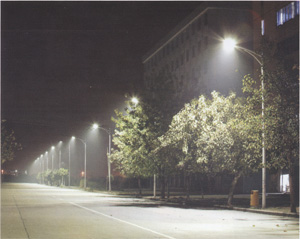Tyntek Targets Mainland China's LED Lighting Market
2010/03/23 | By Ken LiuAttractive government incentives and vast market potential has LED chipmaker Tyntek Corp. thinking seriously about setting up an epitaxy wafer plant in mainland China. If this happens, reports the company's chairman, Bosco Foo, the new plant will have over 100 metal organic chemical vapor deposition (MOCVD) chambers.
"The mainland's authorities offer a subsidy of RMB10 million [US$1.4 million at RMB6.8:US$1] for each MOCVD chamber, which is tantamount to half of the investment capital," Foo comments. "Also, investors are allowed to halve the mandatory depreciation period. These conditions can do a lot to sharpen our competitive edge. In addition, operating a plant in the mainland would increase our chances of wining local orders there."
The formation of a joint venture, he says, is the most likely scenario for the company's mainland investment plan.
Tyntek is already active in the mainland, having landed contracts to install 13,000 LED streetlights by the end of this year at an aerospace science zone in Xian, Shannxi Province. The city government plans to add traffic lights and indoor lights to the contracts as part of its plan to install 270,000 LED streetlights throughout the city.
Foo also expects to get business from Shannxi Province. "The provincial government is very active in pushing for LED streetlight projects," he explains. "We estimate that this one province has a market of over one million streetlights."
Tyntek has entered into an alliance with the Xian Wanko Time Engineering Integration Co. and Xian Shenguang New Energy Co. for development of the province's market. Foo explains that Wanko is the only licensed construction company in the province, while Shenguang is a money-making coal mining company that has branched out into the solar-energy and LED sectors. "As the only licensed construction company in the province, Wanko is very well positioned to win provincial contracts," Foo says.
Foo claims that the governments of Fujian Province, Wuhan City, Dalian City, and Hanzhou City are also offering his company advantageous conditions for building factories in their areas.
The company expects that its burgeoning business in China will boost its revenue growth to above 50% this year, to NT$4 billion (US$125 million). "We have enough orders to keep our production lines humming at least until the next quarter, and we expect monthly revenues to set new records then," says the company's chief finance officer, M.L. Chu. She estimates that revenues for the current quarter will be up 5-10% above those of the last quarter.

To cope with its strained production capacity, the company plans to add 26 MOCVD chambers by January 2011, increasing its total to over 30. Foo estimates that his epi-wafer operation will contribute NT$600 million (US$18.7 million) to the company's 2010 revenue, with the remainder coming from chips, LED components, and lighting modules.
Tyntek has acquired the Ubilux Optoelectronics Corp., which will provide some of the added capacity with its two MOCVD machines for making blue epi wafers and two machines for making four-element wafers.




